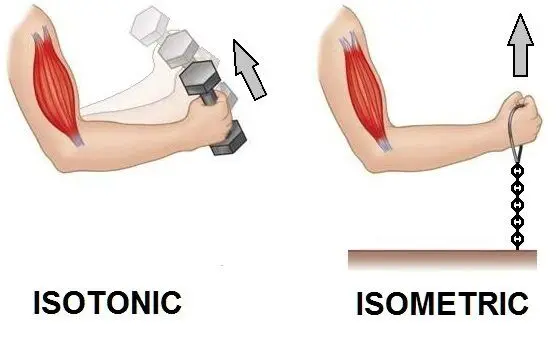
Exploring Isotonic and Isometric Strength Exercises: Building Power and Stability
Strength training is a fundamental aspect of physical fitness, offering numerous benefits ranging from enhanced muscle mass and bone density to improved metabolism and overall functional capacity. Two primary categories of strength exercises, isotonic and isometric, form the foundation of strength training regimens. In this comprehensive article, we will delve into the world of isotonic and isometric exercises, understanding their differences, benefits, and how they contribute to developing strength, stability, and muscle endurance.
Understanding Isotonic Strength Exercises
Isotonic exercises, also known as dynamic exercises, involve muscle contractions that cause movement through a range of motion. These exercises exert a consistent tension on the muscle fibers as they lengthen and shorten during the movement. Isotonic exercises are commonly divided into two types:
1. Concentric Contractions
In concentric contractions, the muscle shortens as it generates force against a resistance. For example, during a bicep curl, the upward motion of lifting the weight involves concentric contractions of the bicep muscles.
2. Eccentric Contractions
Eccentric contractions occur when the muscle lengthens while generating force against a resistance. Using the bicep curl example, lowering the weight back down involves eccentric contractions of the bicep muscles.
Popular examples of isotonic exercises include squats, lunges, bench presses, and deadlifts. Isotonic exercises are effective for building muscle strength, increasing muscle size (hypertrophy), and improving joint flexibility.
Exploring Isometric Strength Exercises
Isometric exercises, also known as static exercises, involve muscle contractions without a change in muscle length or joint angle. In other words, the muscle contracts against a resistance, but there is no visible movement. Isometric exercises are particularly effective for building muscle endurance and enhancing stability.
Benefits of Isometric Exercises
Isometric exercises offer several unique benefits:
- Muscle Endurance: Isometric exercises challenge muscles to maintain a contraction for an extended period, leading to improved muscle endurance.
- Joint Stability: These exercises enhance joint stability by strengthening the surrounding muscles and connective tissues, reducing the risk of injuries.
- Functional Strength: Isometric exercises translate well to real-world scenarios where stability is essential, such as holding a heavy object in place or maintaining posture.
Common examples of isometric exercises include planks, wall sits, and the yoga pose “Chair Pose.” These exercises can be performed anywhere, making them suitable for individuals without access to gym equipment.
Comparing Isotonic and Isometric Exercises
1. Muscle Contraction
Isotonic exercises involve both concentric and eccentric contractions, resulting in visible muscle movement. Isometric exercises involve static contractions with no observable movement.
2. Muscle Development
Isotonic exercises are excellent for building muscle strength and size. Isometric exercises primarily enhance muscle endurance and stability.
3. Range of Motion
Isotonic exercises involve a full range of motion, while isometric exercises are performed within a fixed position.
4. Joint Stability
Isotonic exercises contribute to joint stability but with a greater emphasis on muscle strength. Isometric exercises target joint stability directly by engaging the muscles that support the joint.
5. Equipment and Accessibility
Isotonic exercises can involve various equipment like dumbbells, resistance bands, and machines. Isometric exercises can often be performed without any equipment and are suitable for home workouts.
Incorporating Both for a Balanced Routine
The choice between isotonic and isometric exercises depends on individual fitness goals and preferences. Combining both types of exercises in a strength training routine offers a well-rounded approach. Isotonic exercises can help build muscle size and strength, while isometric exercises enhance stability, endurance, and functional strength.
Conclusion
Isotonic and isometric exercises each play a significant role in strength training, offering unique benefits to individuals seeking to improve their physical fitness. Isotonic exercises contribute to muscle strength and hypertrophy through dynamic movements, while isometric exercises focus on muscle endurance and joint stability with static contractions. Integrating both types of exercises into a well-designed strength training program can help individuals achieve a comprehensive and balanced approach to building strength, stability, and overall fitness.



